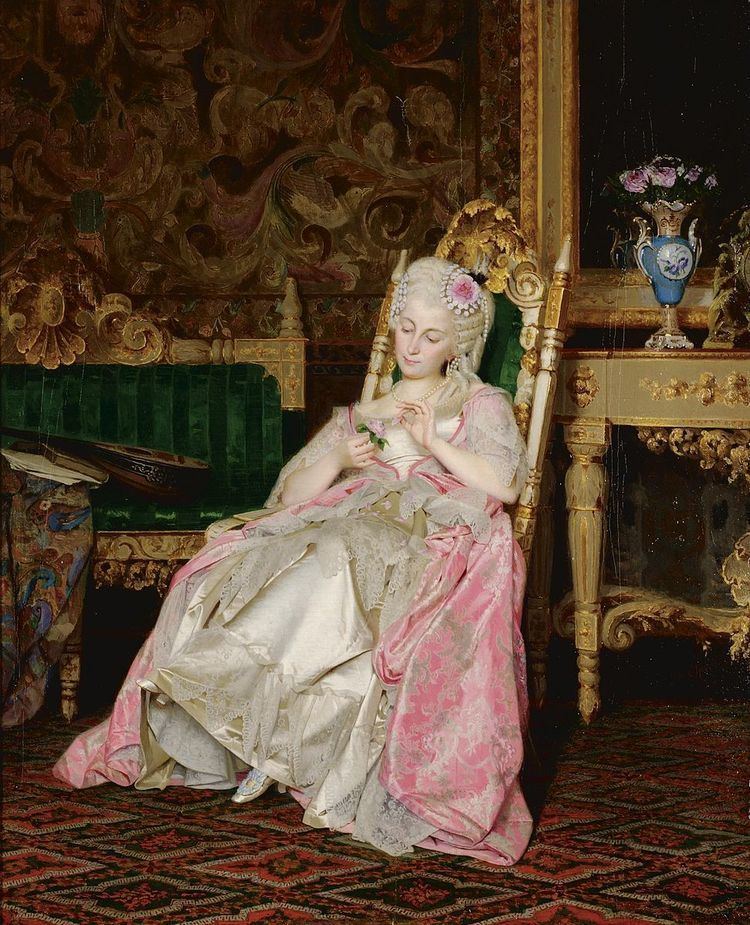 | ||
He loves me, he loves me not or She loves me, she loves me not (originally effeuiller la marguerite in French) is a game of French origin, in which one person seeks to determine whether the object of their affection returns that affection or not.
A person playing the game alternately speaks the phrases "He (or she) loves me," and "He loves me not," while picking one petal off a flower (usually an oxeye daisy) for each phrase. The phrase they speak on picking off the last petal supposedly represents the truth between the object of their affection loving them or not. The player typically is motivated by attraction to the person they are speaking of while reciting the phrases. They may seek to reaffirm a pre-existing belief, or act out of whimsy.
A humorous twist on the game is "She loves me, she loves me lots."
This fortune-telling is shown as a pantomime in the 1st act of Giselle, ballet by Jean Coralli and Jules Perrot (Paris, 1841).
